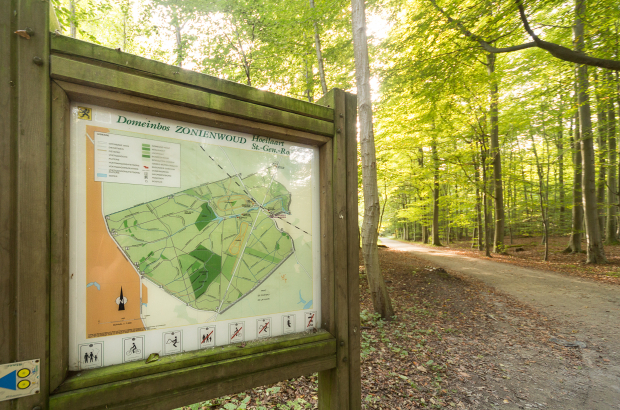- Daily & Weekly newsletters
- Buy & download The Bulletin
- Comment on our articles
Sonian Forest feels the pressure as stressed citizens flee the city
The Sonian Forest is the green lung of Brussels. It is where the house-bound citizens of the capital come to breathe, move and forget about the four walls which surround them at home. It’s a place to release the pressure, to exhale, at a time when the current health crisis has us all seeking calm.
But the inhabitants of Brussels are not the only ones feeling the pressure of the coronavirus pandemic. The forest itself is also becoming stressed out – mainly due to the increasing numbers of humans who let off steam there and the rising tensions among some of those who jostle for space.
While things have yet to reach the level of the incident in Fagnes where an irate cyclist knocked over a five-year-old girl as he passed her family on a footpath, regular visitors to the Sonian Forest have noticed a rise in tensions among walkers and cyclists. "We are not yet at the Fagnes stage, but clearly the tension is higher than before," explained Stéphane Van Wijnsberghe, from the Forest and Nature division of Brussels Environment.
The forest, as it always was before the pandemic, is very busy at the weekend and on Wednesday afternoons after the schools have closed for half-days. But observers have seen a marked increase of visitors on all days of the week. And they are not only flocking to the popular areas such as the Red Cloister or the Boitsfort Hippodrome, but the whole forest.
‘The whole forest’ worryingly means ‘the whole forest’ with more and more people straying from the beaten track to trample through the undergrowth in search of solitude, crushing plants and flowers on their way and packing down the soil which makes it hard for vegetation to grow.
They disturb the wildlife too. The deer population, which has seen a steady drop-off in numbers over the last two years, has suffered more than most. Humans and dogs encroaching on areas where the deer felt protected has led to the animals becoming more stressed and anxious, a state which causes the deer to use up their fat reserves, stored to help keep out the cold.
Water hens have also been disturbed during their nesting time with dogs jumping into the water, destroying nests and disturbing adult birds during breeding.
Since the first wave of the pandemic, dog owners have been ordered to keep their pets on a lead but incidents still occur. I0 na response to this and the growing numbers of visitors, two extra forest supervisors will be hired to boost the existing team of eight rangers and four supervisors. "Their role is above all to inform and to raise public awareness," insisted Stéphane Van Wijnsberghe, "but they can also, after several warnings, issue fines." A deviation from the forest regulations, such as straying off a designated track, riding a bicycle on a pedestrian path or having your dog run free, will incur a €50 fine. A second offence sees that figure double.
In a bid to keep excessive numbers of people away, some of the forest car parks have also been closed. Some have been shut as part of a pre-existing plan for the forest, adopted in June 2019, but the policy has been extended and accelerated as pressure on the forest has increased.
"During the first stay-at-home period, you could only walk near your home,” said Stéphane Van Wijnsberghe. “The Flemish region then decided to close forest car parks on its territory, and we followed. And it was decided not to reopen them again."
Some have questioned the logic of doing this at a time when people feel the need to escape the city, to which Stéphane Van Wijnsberghe responded: "The idea is really to relieve a central core of the forest to allow biodiversity to continue. We don't reduce the number of parking spaces, we relocate them."
The aim is to focus the public on seven entrances. For the Brussels part, it is the Boitsfort Hippodrome (where more parking spaces are provided) and the Red Cloister area. "We started this in 2000, and 20 years later, we're still trying to go little by little,” said Stéphane Van Wijnsberghe. “We’ve also set up bike parks, to encourage people to come by bike, to leave their bikes in the parking lot and then go for a walk."




















Comments
Just a reminder for people who don't live in the Brussels Region: it's been months now that we've had to wear a face mask everywhere as soon as we leave home. The forest may be the only place where we can enjoy the outdoors without it. No big surprise it attracts a crowd.